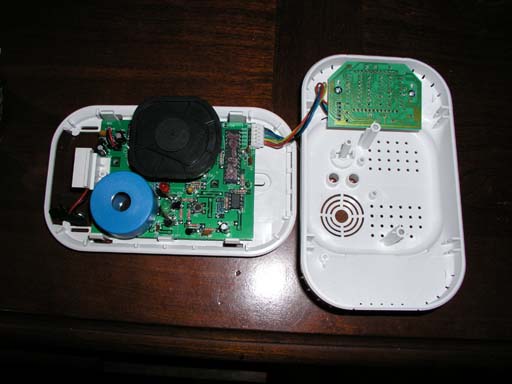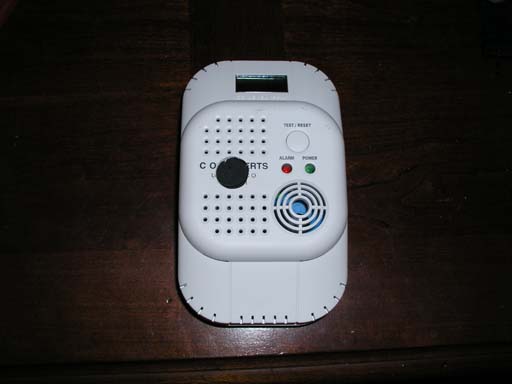
Heh folks.
The recent stuff about CO in gas, including two apparent DEATHS in Mexico from contaminated breathing media, has caused me to take a very close look at the CO Experts detector sold at http://www.aeromedix.com with an eye towards modifying one as a "field tester", much like an O2 or He analyzer.
I dissected mine, and found the following:

To open it up, you remove two screws from the back, then carefully press the four release catches with a small screwdriver. The cover then pops off, with the LCD display in the "cap" and the rest of the unit in the base.
The PCB is held in place with two snaps on the side of the case and is easily released. The sensor is a PLUG IN (yay!) and has a part number on it of "Monox B03350575". A bit of research on the net found the sensor manufacturer at http://www.monox.com, and data sheets on the sensor are available there at http://www.monox.com/pdf/monoxs_data.pdf, along with a user's manual.
The latter (user's manual) warns of inductive noise pickup which can destabilize the measuring circuitry, so I will not attempt to remove the sensor and remote it.
Instead, I will modify the case.
Besides the sensor, there is a memory IC on the board, a large DIP chip which appears to be a PLA-programmed microcontroller (they've conveniently scribbled on the top of it and I cannot make out the original numbers) and a chip under the sensor that I assume from the support circuitry is an op-amp.
The case is cleverly designed so that the sensor's "ambient sensor hole" is positioned right between the two rows of holes in the case itself, so as to promote ambient air flowing OVER the hole.
Thus, the obvious modification is to drill a single hole the size of the "O2 sensor" cap that is often used (see http://www.oxycheq.com/accessories.html) under "sensor cap".
Then, a sensor cap can be "plugged in" as required, or if you wish, permanently fitted into the resulting hole, and secured with E6000.
The result will be that gas flow coming in through the tube coupling at low volume/pressure then will flow over the sensor hole much like ambient, excluding outside gas. This should result in a reading that reflects ONLY the gas in the tank being sampled. You then connect a standard BC flow-restricted fitting (as with your O2 sensor) to the tube, and voila - you're in business.
And here are the results!

The unit reassembled, ready to rock and roll....

Connected to my O2 measuring setup, on a pony bottle full of air. I connected it, turned on the gas, and let it run for a couple of minutes, since the sensor's claimed response time is 2 minutes. If the level is over 5ppm it is supposed to appear immediately. The level display remained blank (good!), so I then pressed the button and saw that the current level was zero ppm. Good!
Next up is the HIGH sensor reading - what is the maximum. It also shows WHEN it was last that high. Here's what I saw there....

So the maximum the sensor saw during this test was 3 ppm - still acceptable, but not zero! Waiting a bit more showed that the 3ppm level was recorded one minute hence, and that it lasted for 0 minutes (it was transient.)
To clear the unit between tests you press AND HOLD the "Test/Reset" button; it will show the levels, then say "CLR" for a few seconds. That clears the high level and other memories, so you can do another test and "catch" transient CO excursions in the sampled gas.
Stuffing this entire thing in a Pelican box and buying a second sensor tee looks to be damn easy. You can then jack it into your gas supply and have at it.
From Monox on the use of this modification with enriched air, or hypoxic with at least 10% FO2:
Dear Karl;
Thanks for your e mail.
The device operates by oxidising CO to Carbon Dioxide and for this reaction to take place,oxygen is required. If you have more than 21% is no problem at all. At very low oxygen atmospheres that is less than 5% the device will lose some linearity,particularly at high CO concentrations i.e more than 1000ppm. So I would say at 10-16% oxygen you should be absolutely fine on both linearity and accuracy.
Happy diving!
Bernard Thomas
Dive Safely!
PS: I am currently mounting a campaign to get these, or something like it, installed in dive shops around the world. See the campaign here.